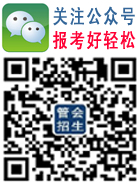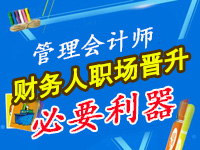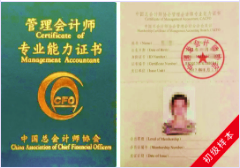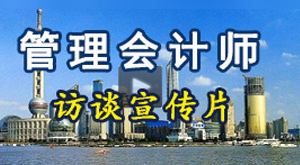英語六級40天突破講義與筆記之閱讀理解(16)
A) they didn’t take the offer seriously
B) they didn’t want to risk their career
C) they were unwilling to reveal their secret
D) they thought it was not in line with their practice
注:爭議題,B、C皆可。
18. The purpose of Emily Rosa’s experiment was ____________.
A) to see why TT could work the way it did
B) to find out how TT cured patient’s illness
C) to test whether she could sense the human energy field
D) to test whether a human energy field really existed
注:對應文章第三段首句
19. Why did some TT practitioners agree to be the subjects of Emily’s experiment?
A) It involved nothing more than mere guessing.
B) They thought it was going to be a lot of fun.
C) It was more straightforward than other experiments.
D) They sensed no harm in a little girl’s experiment.
注:對應文章第三段末句,no harm對應innocent,little girl對應fourth-grade
20. What can we learn from the passage?
A) Some widely accepted beliefs can be deceiving.
B) Solid evidence weighs more than pure theories.
C) Little children can be as clever as trained TT practitioners.
D) The principle of TT is too profound to understand.
A nine-year-old schoolgirl single-handedly cooks up a science-fair experiment that ends up debunking(揭穿...的真相)a widely practiced medical treatment. Emily Rosa’s target was a practice known as therapeutic(治療)touch (TT for short), whose advocates manipulate patients’ "energy field" to make them feel better and even, say some, to cure them of various ills. Yet Emily’s test shows that these energy fields can’t be detected, even by trained TT practitioners(行醫者). Obviously mindful of the publicity value of the situation, Journal editor George Lundberg appeared on TV to declare, "Age doesn’t matter. It’s good science that matters, and this is good science."
Emily’s mother Linda Rosa, a registered nurse, has been campaigning against TT for nearly a decade. Linda first thought about TT in the late ’80s, when she learned it was on the approved list for continuing nursing education in Colorado. Its 100,000 trained practitioners (48,000 in the U.S.) don’t even touch their patients. Instead, they waved their hands a few inches from the patient’s body, pushing energy fields around until they’re in "balance." TT advocates say these manipulations can help heal wounds, relieve pain and reduce fever. The claims are taken seriously enough that TT therapists are frequently hired by leading hospitals, at up to $70 an hour, the smooth patients’ energy, sometimes during surgery.
Yet Rosa could not find any evidence that it works. To provide such proof, TT therapists would have to sit down for independent testing-something they haven’t been eager to do, even though James Randi has offered more than $1 million to anyone who can demonstrate the existence of a human energy field. (He’s had one taker so far. She failed.) A skeptic might conclude that TT practitioners are afraid to lay their beliefs on the line. But who could turn down an innocent fourth-grader? Says Emily: "I think they didn’t take me very seriously because I’m a kid."
The experiment was straightforward: 21 TT therapists stuck their hands, palms
up, through a screen. Emily held her own hand over one of theirs-left or right-and the practitioners had to say which hand it was. When the results were recorded, they’d done no better than they would have by simply guessing. if there was an energy field, they couldn’t feel it.
21. We learn from the first paragraph that two systems of automated highways __________.
A) are being planned
B) are being modified
C) are now in wide use
D) are under construction
注:on the drawing borad就是planned
22. A special-purpose lane system is probably advantageous in that ________________.
A) it would require only minor changes to existing highways
B) it would achieve the greatest highway traffic efficiency
C) it has a lane for both automated and partially automated vehicles
D) it offers more lanes for automated vehicles
注:A選項說反了
23. Which of the following is true about driving on an automated highway?
A) Vehicles traveling on it are assigned different lanes according to their destinations.
B) A car can join existing traffic any time in a mixed lane system.
C) The driver should inform his car computer of his destination before driving onto it.
D) The driver should share the automated lane with those f regular vehicles.
注:對應第二段開頭
24. We know form the passage that a car can enter a special-purpose lane _____________.
A) by smoothly merging with cars on the conventional lane
B) by way of a ramp with electronic control devices
C) through a specially guarded gate
D) after all trespassers are identified and removed
注:爭議題
25. When driving in an automated lane, the driver ___________.
A) should harmonize with newly entering cars
B) doesn’t have to rely on his computer system
C) should watch out for potential accidents
D) doesn’t have to hold not to the steering wheel
注:文章最后一段
What might driving on an automated highway be like? The answer depends on what kind of system is ultimately adopted. Two distinct types are on the drawing board. The first is a special-purpose lane system, in which certain lanes are reserved for automated vehicles. The second is a mixed traffic system: fully automated vehicles would share the road with partially automated or manually driven cars. A special-purpose land system would require more extensive physical modifications to existing highways, but it promises the greatest gains in freeway(高速公路)capacity.
Under either scheme, the driver would specify the desired destination, furnishing this information to a computer in the car at the beginning of the trip or perhaps just
課程推薦
- 中級會計職稱普通班
- 中級會計職稱特色班
- 中級會計職稱精品班
- 中級會計職稱實驗班
| 課程班次 | 課程介紹 | 價格 | 購買 |
|---|---|---|---|
| 普通班 | 班次特色 |
240元/一門 450元/兩門 680元/三門 |
購買 |
| 課程班次 | 課程介紹 | 價格 | 購買 |
|---|---|---|---|
| 精品班 | 班次特色 |
680元/一門 1200元/兩門 1800元/三門 |
購買 |
- 中級會計職稱機考模擬系統綜合版
- 中級會計職稱機考模擬系統實驗版
| 模擬題庫 | 題庫介紹 | 價格 | 購買 |
|---|---|---|---|
綜合版 |
題庫特色 |
120元/一門 200元/兩門 240元/三門 |
購買 |
| 模擬題庫 | 題庫介紹 | 價格 | 購買 |
|---|---|---|---|
| 實驗版 | 題庫特色 |
240元/一門 480元/兩門 720元/三門 |
購買 |
最新新聞
網站地圖
專業知識水平考試:
考試內容以管理會計師(中級)教材:
《風險管理》、
《績效管理》、
《決策分析》、
《責任會計》為主,此外還包括:
管理會計職業道德、
《中國總會計師(CFO)能力框架》和
《中國管理會計職業能力框架》
能力水平考試:
包括簡答題、考試案例指導及問答和管理會計案例撰寫。
- 管理會計師PCMA 免費試聽
- 中級管理會計師 免費試聽
- 稅務管理師 免費試聽
- 智能財務師 免費試聽
- 國際注冊會計師 免費試聽
- 國際財務管理師 免費試聽
- 初級會計職稱考試 免費試聽
- 中級會計職稱考試 免費試聽
- 注冊會計師考試 免費試聽
- 全國外貿會計考試 免費試聽
- 會計實務操作 免費試聽
- 管理會計師 免費試聽
-
初級會計職稱招生方案
·特色班
·精品班
·實驗班

初級會計職稱網上輔導 -
中級會計職稱招生方案
·普通班
·特色班
·精品班

中級會計職稱網上輔導
專業知識水平考試:
考試內容以管理會計師(中級)教材:
《風險管理》、
《績效管理》、
《決策分析》、
《責任會計》為主,此外還包括:
管理會計職業道德、
《中國總會計師(CFO)能力框架》和
《中國管理會計職業能力框架》
能力水平考試:
包括簡答題、考試案例指導及問答和管理會計案例撰寫。

 您現在的位置:
您現在的位置:




